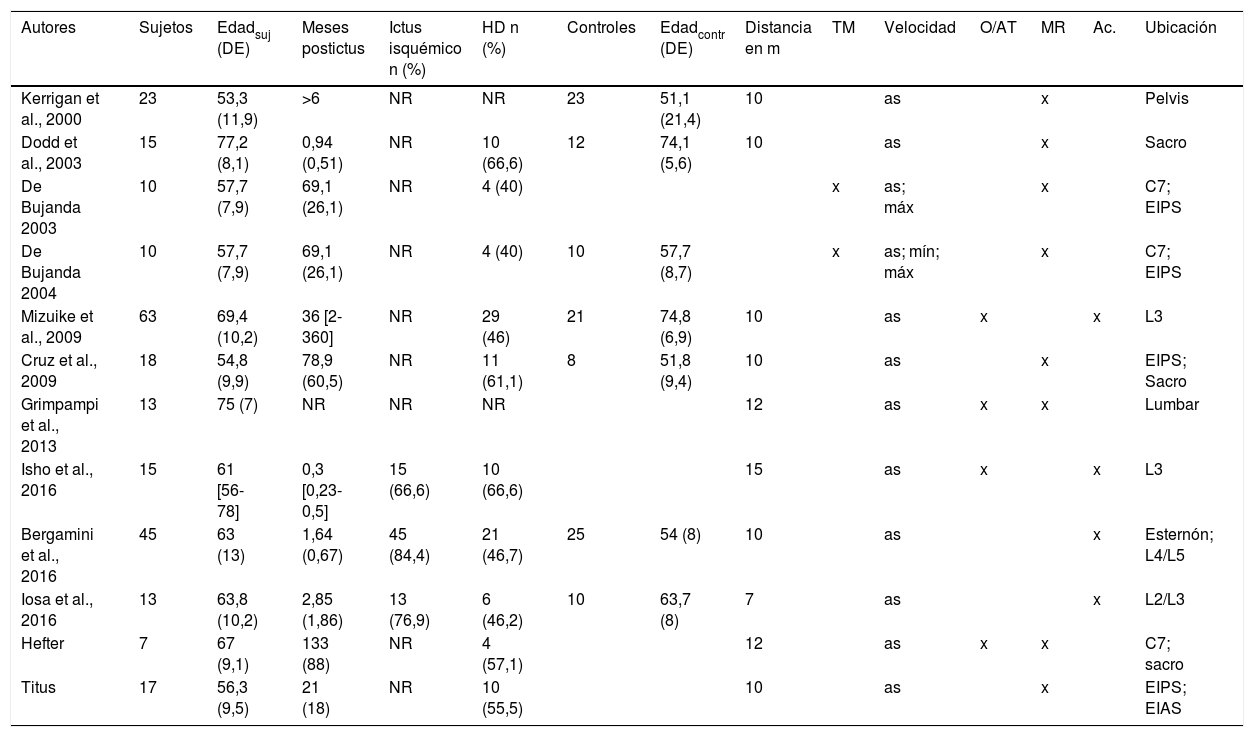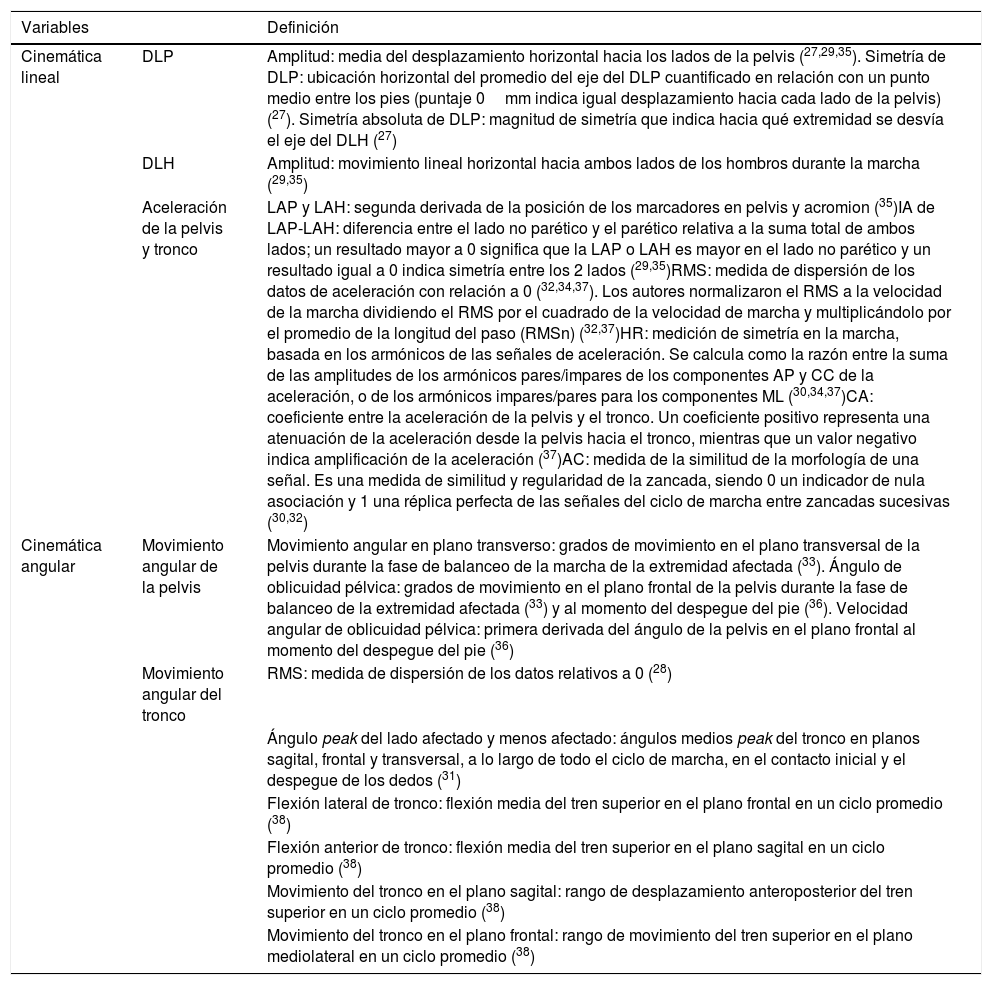El tronco y la pelvis se afectan como consecuencia de un ictus, lo que predispone a caídas y dependencia. El objetivo de esta revisión fue describir la cinemática lineal y angular de tronco y pelvis durante la marcha en pacientes con secuela de accidente cerebrovascular. Se incluyeron estudios publicados hasta junio de 2018 que hubieran utilizado un sistema de captura de movimiento 2-3D durante la marcha. La búsqueda fue en Cochrane, Medline, PEDRo, Lilacs, Scielo, EBSCO, ClinicalKey y Elsevier. Se seleccionaron 12 artículos. La cinemática lineal muestra mayores desplazamientos laterales y aceleración en todos los ejes. La cinemática angular en fase de balanceo del segmento parético presenta la pelvis en rotación posterior, elevada y con menor velocidad, y tronco en flexión anterior, inclinación lateral y rotación ipsilaterales. Los estudios tienen alta variabilidad, lo que imposibilita establecer una medida de efecto común. Sin embargo, los resultados permiten describir el comportamiento del tronco y de la pelvis.
The trunk and pelvis are affected after stroke, predisposing individuals to falls and dependency. The aim of this review was to describe the lineal and angular kinematics of the trunk and pelvis in patients with post-stroke sequels during walking. We included studies published up to June 2018 using a 2-3 D motion capture system during walking. We searched the Cochrane, Medline, PEDRo, Lilacs, Scielo, EBSCO, ClinicalKey and Elsevier databases. Twelve articles were selected. Linear kinematics showed greater lateral displacement and acceleration in all axes. Angular kinematics in the swing phase of the paretic segment showed the pelvis in posterior rotation, with elevation and lower velocity and the trunk in anterior flexion, with lateral inclination and ipsilateral rotation. The studies showed wide variability, making it impossible to establish of a common effect. However, the results allow description of the movement of the trunk and pelvis.









